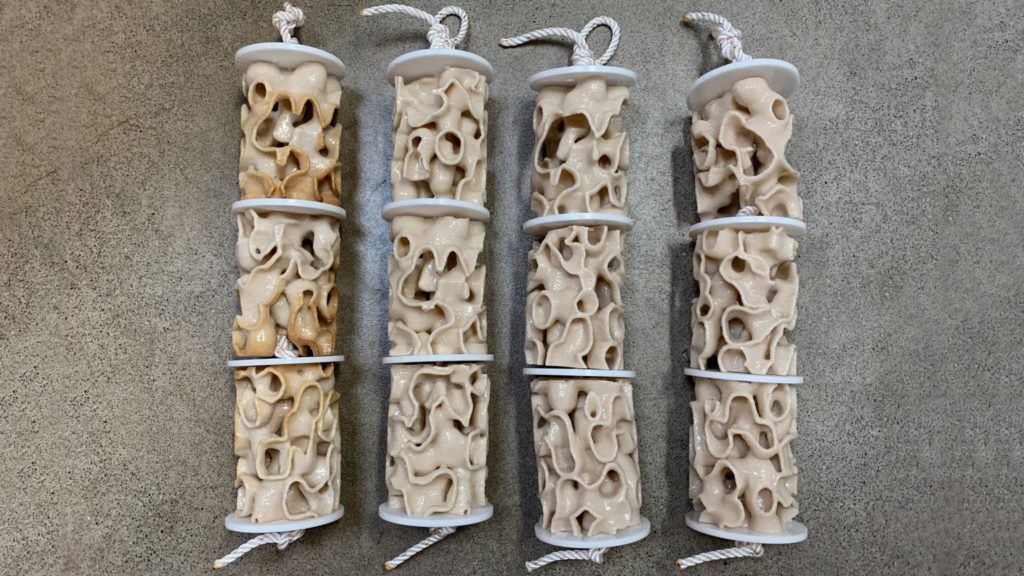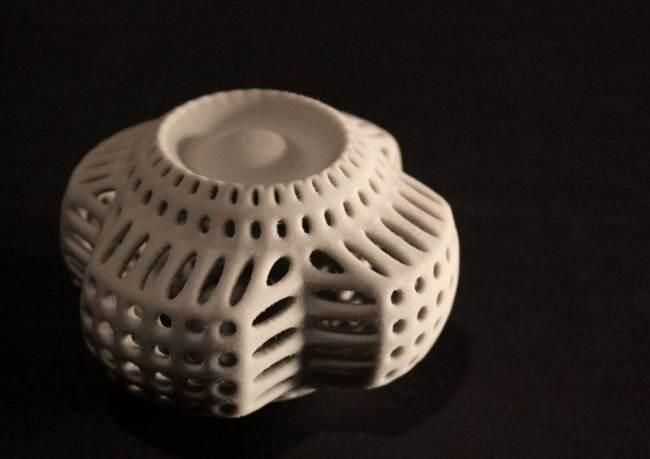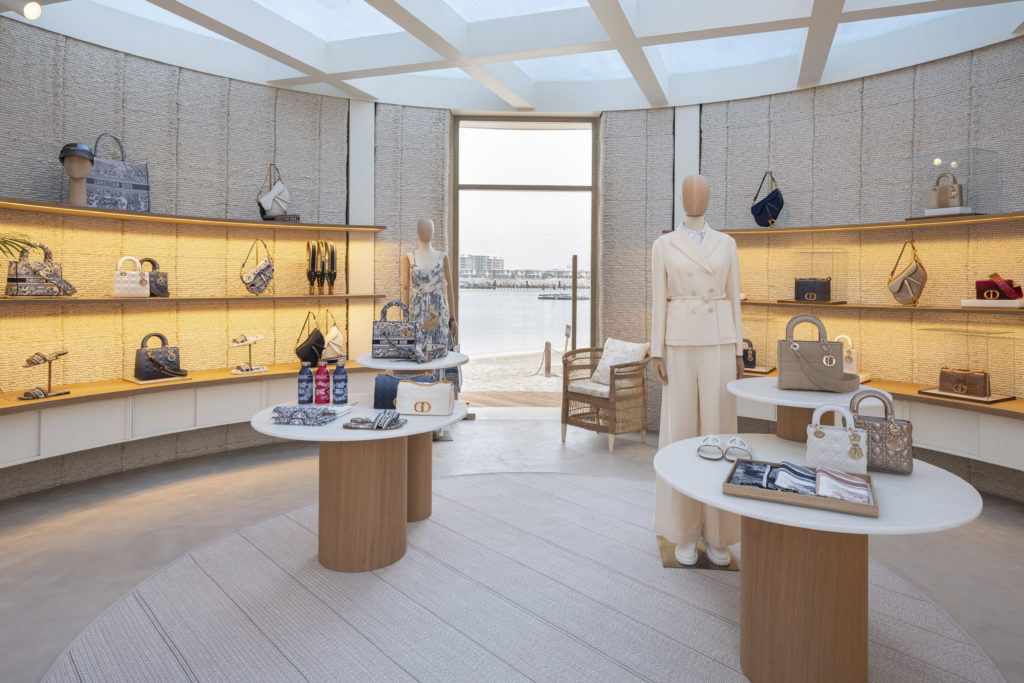Sustainability is usually seen as a move towards using recyclable or recycled materials. Some see it as a means of ensuring that the product that you make will be recyclable. For others, a reduction in emissions will be the way to approach the problem. Few people really think about making products that are long lasting and, therefore, much more sustainable. But what if we designed for ruins?

Master of Science in Sustainable Design students test new geometries
We can do this in two different ways: popsicle sticks and literal ruins. With a frozen-lolly stick approach, we can design a product so that its remains, leftovers, packaging, or spent consumables add utility. The item, value of the item, overall utility, some externality, or experience are increased in some way. Popsicle sticks started out as a disposable good, where the wrapper and stick would be trashed. Many have made creations with these wooden remnants, however, glueing or assembling them.
One could think of other applications where packaging could be useful. Many wine bottles are kept as candelabras, but perhaps others could come with reusable tops so that they can be more readily repurposed as water bottles for storing in the fridge. There is a lot of opportunity there to make better designs that repurpose consumables or waste in intriguing ways to benefit the planet and end user. There is also an opportunity perhaps to engender a Beanie Babies-like quest for the worthless in collectible popsicle sticks that could be exploited.

Imitation reefs 3D printed from calcium carbonate.
But what if we go a step further? What if we designed for a ruined, post-apocalyptic world? What if, down to the hard brass tacks, we design for a world that is years closer to Waterworld or Mad Max than it is to some kind of equilibrium that sustains us all indefinitely? My favorite example of this is a Heineken bottle which can be turned into a brick for a house. What if all of the things that we threw away were this useful? Why don’t we redesign all of the useless things to have utility in this way. Through 3D printing, we can retool for a future more reminiscent of our past.

Packaging made from insects.
Wax paper cookie packaging is much more widely usable than a thermoset, for example. Wound gauze sheets could encase the next shirt you buy and a cloth bag holding your wallet could filter water, as well. Speakers could be broken down to become a sieve and compass in an emergency. At the end of its life, your computer monitor could become an Etch-a-Sketch. Now all of this may very well seem quite fanciful and either too alarmist to have utility or perhaps suited for an even worse time, but what’s the point of it?
Well, with 3D printing and with 3D printed tooling, we could do things like this. We could be truly interesting in graphic design, branding, packaging, and product design. By using additive manufacturing, we can truly differentiate a proposition. For a single week or one product or very quickly, we can change how things are made. We can still mass produce all of the cookies, but we can quickly use a food mould to surf a trend.
We’re always talking about permanent changes to how 3D printing does things, and yet we’re best at the improvised. 3D printing is best at being a quick duck tape solution to a problem. 3D printing is always trying to produce millions of things with a million unique tools. But, what we can also do is make companies quicker, more versatile, and more likely to experiment. In AM, we’re always talking about where the cutoff is to when we print and when we use mass manufacturing technologies, but we should maybe also look at how we can make short-run products and changes within these mass manufacturing operations.

Image courtesy of Mohamed Somji/Dior/WASP
With 3D printing, we can quickly take ideas and make them real. This is fine for prototyping and some high-value, mass-customized items, but what about the things with millions of copies? We can truly innovate in many mass-market products by being able to push the boat out more, by taking on more risk, and delivering quicker to a fast-moving world.
We can design for ruins but also ruin others by outclassing them. The truly competitive can use 3D printing to more quickly design parts that outperform as art, design, or in business. With 3D printing, the daring can be more so, while the careful can take controlled risks. It is this key quality that is the “killer app” of 3D printing. I can be quicker than you, fail faster than you, improve faster than you, change more rapidly. I will out-corner you, out-maneuver you and crush you. I can do something like designing for ruins or just design to ruin you.
Subscribe to Our Email Newsletter
Stay up-to-date on all the latest news from the 3D printing industry and receive information and offers from third party vendors.
Print Services
Upload your 3D Models and get them printed quickly and efficiently.
You May Also Like
Making Space: Stratasys Global Director of Aerospace & Defense Conrad Smith Discusses the Space Supply Chain Council
Of all the many verticals that have been significant additive manufacturing (AM) adopters, few have been more deeply influenced by the incorporation of AM into their workflows than the space...
EOS in India: AM’s Rising Star
EOS is doubling down on India. With a growing base of aerospace startups, new government policies, and a massive engineering workforce, India is quickly becoming one of the most important...
PostProcess CEO on Why the “Dirty Little Secret” of 3D Printing Can’t Be Ignored Anymore
If you’ve ever peeked behind the scenes of a 3D printing lab, you might have caught a glimpse of the post-processing room; maybe it’s messy, maybe hidden behind a mysterious...
Stratasys & Automation Intelligence Open North American Tooling Center in Flint
Stratasys has opened the North American Stratasys Tooling Center (NASTC) in Flint, Michigan, together with automation integrator and software firm Automation Intelligence. Stratasys wants the new center to help reduce...


































